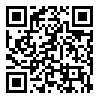Volume 21, Issue 4 (3-2009)
JMDP 2009, 21(4): 76-105 |
Back to browse issues page
Download citation:
BibTeX | RIS | EndNote | Medlars | ProCite | Reference Manager | RefWorks
Send citation to:



BibTeX | RIS | EndNote | Medlars | ProCite | Reference Manager | RefWorks
Send citation to:
Mali M, Torabi H, Garkaz M. (2009). Continual Improvement and Innovation: an Effective Integrated Method for Improving Iranian Organizations. JMDP. 21(4), 76-105.
URL: http://jmdp.ir/article-1-729-en.html
URL: http://jmdp.ir/article-1-729-en.html
1- , Mojtaba_Mali@yahoo.com
Abstract: (21360 Views)
Top managers of organizations should always spend most of their time to improve their organizations while devolving the routine and day-to-day maintenance affairs to lower levels. Is it commonly practiced in the same manner in our organizations? The manager who wastes his time by issuing written orders about the jobs which otherwise could have been delegated to subordinate experts would lack enough opportunity to think about new ways to improve the organization. There are two different main standpoints on how to fulfill improvement, namely, gradual/continual improvement, also known as Kaizen, and great leap-based improvement, i.e. innovation. Generally speaking, Japanese companies prefer gradual improvement and Western ones rather believe in innovation. This paper tries to provide an answer to the essential question, “Which of these two approaches are applicable in Iran?” In the final analysis, improvement in the quality of financing and planning (production amount and delivery deadline) becomes the main factor. Here, improvement refers to Kaizen and innovation together. Any corporation or organization should exploit Kaizen and innovation to survive, grow and improve. Now, the chief query emerges to be how to replace grey cells with black petroleum sales and increase our national income through selling and conceding intellectual rights of innovation rather than selling petroleum. Indeed, what shall we do to materialize our ideas and innovations? This article uses descriptive-analytical method to explain various aspects of the issue.
Type of Study: Research |
Subject:
Public Administration
Received: Oct 21 2012 | ePublished: Mar 15 2009
Received: Oct 21 2012 | ePublished: Mar 15 2009
| Rights and permissions | |
 |
This work is licensed under a Creative Commons Attribution 4.0 International License. |







